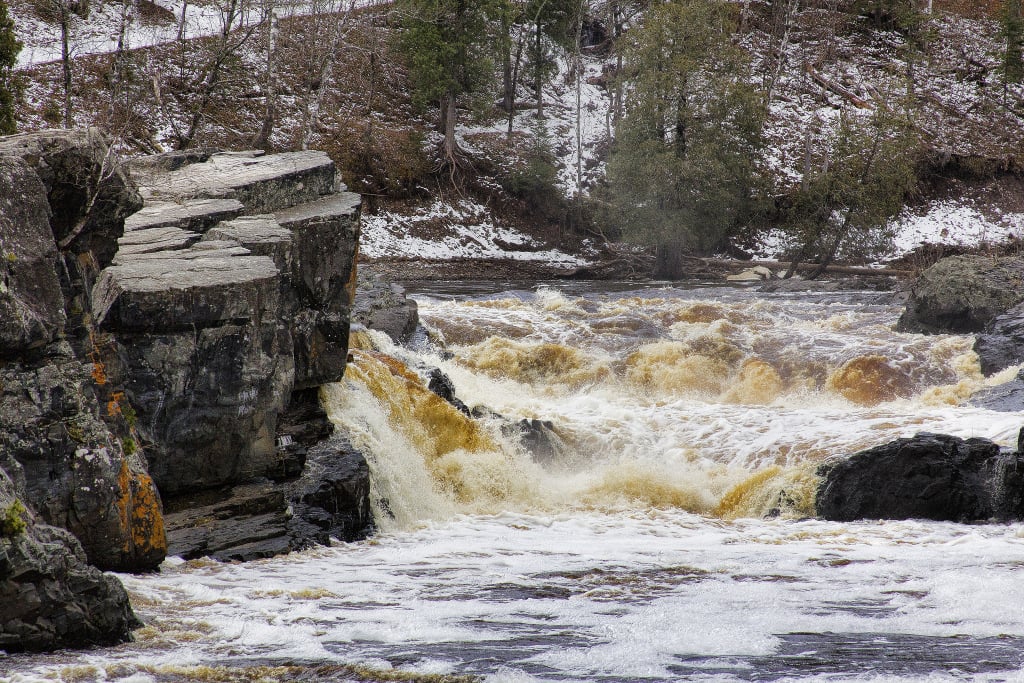
The St. Louis River in northern Minnesota has been named the eighth most endangered river in the United States by river advocacy organization American Rivers. The designation is a response to a proposed copper-nickel mine near the river’s headwaters.
The annual listing of endangered rivers recognizes threats from dams, mining, excessive pumping of water, sewage, and a spectrum of other challenges. The Colorado River in the Grand Canyon topped the 2015 list due to proposed uranium mining and groundwater pumping. Two years ago, the South Kawishiwi River near Ely made the list due to the proposed Twin Metals copper-nickel mine along its route.
“This year’s report underscores the importance of healthy rivers to each and every American,” said Irvin. “Whether it’s for clean drinking water, ample water supplies for farms and cities, abundant fish and wildlife, or iconic places vital to our heritage, we all have a stake in protecting our nation’s rivers.”
A cherished river
The largest tributary to the Great Lakes, the St. Louis has also long been valued for its wild rice waters. Sulfate and mercury pollution from iron mining has already damaged the river, but efforts are underfoot to clean it up. Advocates fear Polymet Mining’s proposal for an open-pit sulfide ore mine could increase pollution.
“Minnesotans cherish the St. Louis River and Lake Superior,” said Andrew Slade of Minnesota Environmental Partnership. “The PolyMet mine will need 500 years of water treatment, and we just can’t accept that.”
On its website, PolyMet says the 500 years figure has been incorrectly applied, but “it’s not known at this time” how long water treatment will need to occur and pledges to pay for it as long as necessary.
“We will meet all applicable state and federal standards for water quality at the project site,” Bruce Richardson, PolyMet spokesman, told the Duluth News Tribune. “We have demonstrated we can meet the standard, including the strict wild rice standard for sulfate.”
The Fond du Lac Band of Lake Superior Chippewa’s reservation is located on the lower St. Louis River, and band members have traditionally gathered a lot of wild rice from it. The potential negative effects of new mines on rice motivated the band to support the endangered designation.
“The Fond du Lac Band of Lake Superior Chippewa is working hard to restore and protect the river for future generations,” explained Fond du Lac Band of Lake Superior Chippewa Chairwoman Karen R. Diver. “Meanwhile, the state and federal agencies whose primary responsibility is to enforce the Clean Water Act are not doing all they can or should to regulate pollution, and companies continue to pollute the water without limits. This endangered river designation should cause all Minnesotans to join the Band in its effort to restore the river.”
See National Geographic’s photos of the St. Louis River in a special photo essay by David Bowman »
Calls for caution
Tom Landwehr, commissioner of the Minnesota Department of Natural Resources, told MinnPost that he welcomes the designation. “It reiterates that which we know: It’s an important river, and we have to be careful that any projects that are ultimately permitted are not going to degrade it,” he said.
American Rivers says opposition to the mine and its potential to pollute the St. Louis River are grounds to reject the mine. It calls on the Minnesota Department of Natural Resources and the U.S. Army Corps of Engineers, and U.S. Forest Service to refuse a permit to PolyMet.
The report says the final Environmental Impact Statement for PolyMet’s proposal is expected later this year, and points to that as the time to stop the mine.

